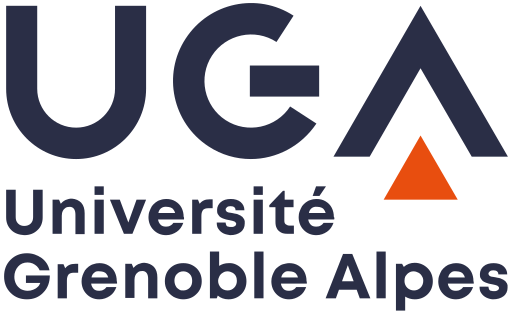This contribution gives an overview of current research in applying object oriented programming to scientific computing at the computational mechanics laboratory (LABMEC) at the school of civil engineering - UNICAMP. The main goal of applying object oriented programming to scientific computing is to implement increasingly complex algorithms in a structured manner and to hide the complexity behind a simple user interface. The following areas are current topics of research and documented within the paper: hp-adaptive finite elements in one-, two- and three dimensions with the development of automatic refinement strategies, multigrid methods applied to adaptively refined finite element solution spaces and parallel computing.
Mots clés : finite element method, object oriented programming, adaptivity, multigrid, substructuring
@article{M2AN_2002__36_5_793_0,
author = {Devloo, Philippe R. B. and Longhin, Gustavo C.},
title = {Object oriented design philosophy for scientific computing},
journal = {ESAIM: Mod\'elisation math\'ematique et analyse num\'erique},
pages = {793--807},
publisher = {EDP-Sciences},
volume = {36},
number = {5},
year = {2002},
doi = {10.1051/m2an:2002041},
zbl = {1024.65110},
language = {en},
url = {http://www.numdam.org/articles/10.1051/m2an:2002041/}
}
TY - JOUR AU - Devloo, Philippe R. B. AU - Longhin, Gustavo C. TI - Object oriented design philosophy for scientific computing JO - ESAIM: Modélisation mathématique et analyse numérique PY - 2002 SP - 793 EP - 807 VL - 36 IS - 5 PB - EDP-Sciences UR - http://www.numdam.org/articles/10.1051/m2an:2002041/ DO - 10.1051/m2an:2002041 LA - en ID - M2AN_2002__36_5_793_0 ER -
%0 Journal Article %A Devloo, Philippe R. B. %A Longhin, Gustavo C. %T Object oriented design philosophy for scientific computing %J ESAIM: Modélisation mathématique et analyse numérique %D 2002 %P 793-807 %V 36 %N 5 %I EDP-Sciences %U http://www.numdam.org/articles/10.1051/m2an:2002041/ %R 10.1051/m2an:2002041 %G en %F M2AN_2002__36_5_793_0
Devloo, Philippe R. B.; Longhin, Gustavo C. Object oriented design philosophy for scientific computing. ESAIM: Modélisation mathématique et analyse numérique, Tome 36 (2002) no. 5, pp. 793-807. doi : 10.1051/m2an:2002041. http://www.numdam.org/articles/10.1051/m2an:2002041/
[1] Noor, Quality assessment and control of finite element solutions. Finite Eleme. Anal. Des. 3 (1987) 1-26. | Zbl
[2] , Using modern features of C++ for adaptive finite element methods: Dimension-independent programming in deal.II, in Proceedings of the 16th IMACS World Congress 2000, Lausanne, Switzerland, 2000, M. Deville and R. Owens Eds. (2000). Document Sessions/118-1.
[3] ,,,,,,,, and, Templates for the Solution of Linear Systems: Building Blocks for Iterative Methods. SIAM (1994). | MR | Zbl
[4] , Sobre a implementação da técnica hp-adaptativa tri-dimensional para elementos finitos. Ph.D. thesis, Faculdade de Engenharia Mecânica, UNICAMP (2000).
[5] , and, Sobre a implementação do refinamento h-p in CILAMCE99 Congresso Ibero Latino Americano de Metodos Computacionais para Engenharia (1999) 1-21.
[6] ,, and, Superconvergence of the local discontinuous galerkin method for elliptic problems on cartesian grids. Technical Report 2000/71 (2000). | MR | Zbl
[7] , and, On an h-type mesh refinement strategy based on minimization of interpolation errors. Comput. Methods Appl. Mech. Engrg. 1-2 (1986) 63-87. | Zbl
[8] , A three-dimensional adaptive finite element strategy. Comput. Structures 38 (1991) 121-130. | Zbl
[9] , On the development of a finite element program based on the object oriented programming philosophy, in Proc. First Annual Object-Oriented Numerics Conference, Corvallis, OR, USA (1993) 183-203. Object Oriented Numerics Conference, Rogue Wave Software, Inc.
[10] , PZ: An object oriented environment for scientific programming. Comput. Methods Appl. Mech. Engrg. 150 (1997) 133-153. | Zbl
[11] and, On the development of a finite element program based on the object oriented programming filosophy, in Numer. Methods Engrg. '92, Ch. Hirsch, O.C. Zienkiewicz and E. Oñate Eds., Elsevier, Brussels, Belgium (1992) 39-42. First European Conference on Numerical Methods in Engineering, Elsevier.
[12] , and, An hp-adaptive finite element method for the numerical simulation of compressible flow. Comput. Methods Appl. Mech. Engrg. 70 (1988) 203-235. | Zbl
[13] and, Implementação da técnica de subestruturação no ambiente de elementos finitos pz. XXII Iberian Latin-American Congress on Computational Methods in Engineering (2001).
[14] , and, Object-oriented finite element analysis. Comput. Structures 34 (1990) 355-374. | Zbl
[15] , and, Hp-meshes method for dynamic fracture propagation. The computational Mechanics Company, Inc. (COMCO) (1999).
[16] and, An object oriented multi-threaded multi-frontal solver. XXII Iberian Latin-American Congress on Computational Methods in Engineering (2001).
[17] , Object oriented programming of the finite element method. Internat. J. Numer. Methods Engrg. 35 (1992) 425-436. | Zbl
[18] and, Object oriented matrix classes. AIMETA Joint conference of Italian group of Comput. mech. CILAMCE (1996) 325-328.
[19] and, The object-oriented approach to finite elements: concepts and implementations. Proc. of the First European Conference on Numer. Methods Engrg., Brussels (1992) 865-870.
Cité par Sources :








